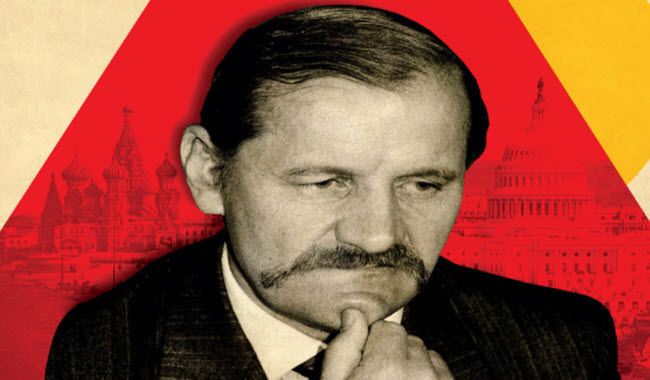The Cold War between the United States and the Soviet Union (now Russia) was rife with numerous intelligence conflicts that played out behind the scenes between the CIA and the KGB. Many of the world’s countries became battlegrounds for these clashes, with spies and agents being the key figures. Identifying and unmasking these individuals was considered a significant victory for these agencies due to the benefits of shutting down information leaks and understanding enemy recruitment methods and movements. These advantages also motivated these agencies to seek out defectors from their adversaries, offering them protection and numerous privileges as they were seen as invaluable sources of intelligence. The history is replete with names of officers who initially served their countries but eventually defected, among them Russian Colonel Vitaly Yurchenko, who left his homeland seeking protection from the Americans in exchange for cooperation, leading to surprising outcomes.
The story of the spy Vitaly Yurchenko begins in the early hours of August 2, 1985, when FBI agent Michael Rashford received a call from his boss informing him that a plane carrying a high-ranking Soviet defector, who had been in Italy the previous day, was arriving. The defector had entered the American consulate in Rome and informed the American officials that he was a colonel in the Soviet intelligence and wanted to defect to the United States, promising to reveal Soviet secrets in exchange for a new life in the West. A plane was prepared for him, and he boarded it, with plans to land at Andrews Air Force Base. Rashford was instructed to go to the base to meet with a CIA officer named Aldrich Ames and interrogate the defector to understand the nature of the information he was offering.
Agent Rashford, a young man of 30 with practical knowledge of Russian, discovered upon arrival at the base that the defector had already landed and that his colleague, Ames, had supervised his transfer to a CIA safe house. Upon arrival, Rashford was greeted by Aldrich Ames, a thin man with large glasses and a thick mustache, who had worked in the CIA’s Soviet office. Accompanying him was another man in his late forties or early fifties, with blond hair, a mustache, a muscular build, and a noticeable scar on his right hand. His name was Vitaly Yurchenko, a colonel in Soviet intelligence. Rashford observed that the American intelligence officers had already begun extracting and documenting information from Yurchenko using a tape recorder, with Yurchenko speaking in English with a Russian accent, revealing astonishing Soviet secrets with great enthusiasm. The Americans faced the challenge of slowing down the information flow to absorb it all. After two or three hours of listening, they decided to take a break and gathered downstairs, their heads spinning from the sheer volume of information.
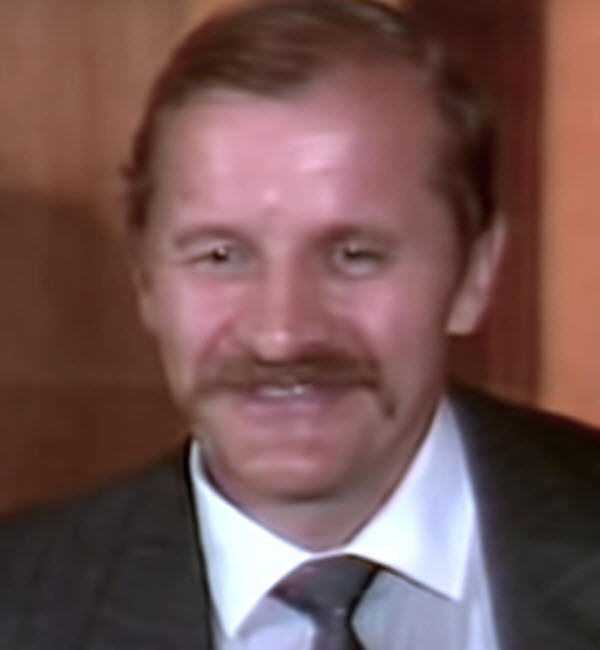
Months before Yurchenko’s arrival, the Americans had suspected the presence of a Soviet spy within one of their security agencies, as this was the only explanation for several puzzling events, notably the recent arrest of the most important American spy in the Soviet Union, Adolph Tolkachev, an aviation specialist. Thus, the initial interrogation of Yurchenko in the safe house was crucial for answering American questions. Yurchenko revealed that there were not just one, but two traitors within their ranks who were stealing American secrets for the Soviet intelligence. He did not know their exact names but provided enough information to start searching for them. He said one was an analyst within the agency codenamed by the Soviets as “Mr. Robert,” while the other worked for the National Security Agency, involved in monitoring foreign communications. These shocking admissions revealed the vulnerability of the United States to Russian espionage and their infiltration into American state structures.
The next day, a new CIA agent, Colin Thompson, joined Aldrich Ames and Michael Rashford at the safe house to continue the investigation and information extraction from Vitaly Yurchenko. Thompson, who would later take over responsibility for Yurchenko after Ames was assigned a new task, initially scrutinized Yurchenko with a seasoned eye. Uncertain whether Yurchenko was telling the truth or lying, Thompson conducted intensive interrogations that lasted for hours, mostly in English with some Russian phrases. The FBI later conducted separate interviews with Yurchenko, sometimes without CIA agents present, and at other times, interviews were conducted together. Often, Yurchenko was asked questions to which the investigators already knew the answers, as a test of his honesty and accuracy. They asked him to detail his career path, and Yurchenko explained that he had served in the Soviet Navy, acquiring the scar on his right hand from an accident. He joined Soviet intelligence in the mid-1970s as a security officer at their Washington office, which housed about 100 Soviet officials, 40 of whom were KGB spies. He worked there for several years until he was transferred back to Moscow in 1983. Although he did not reach the highest echelons of Soviet intelligence, his connections allowed him access to deep secrets.
The information sessions with Yurchenko were recorded, and Rashford copied and distributed the transcripts within the FBI. The information was scrutinized and verified against other sources, proving to be accurate. Overall, Yurchenko revealed important details about 55 individuals working for Soviet intelligence in America. The FBI was already aware of some of them. Yurchenko added new information, most notably about the spy within the CIA codenamed “Mr. Robert,” whom the Americans suspected to be Edward Lee Howard, a CIA officer who had worked in their Soviet office between 1982 and 1983 before being dismissed. To verify this, the FBI sent agents to confront Howard in Texas, who denied ever working with Soviet intelligence before fleeing and disappearing from surveillance, eventually reaching an airport and escaping to Moscow, where he lived in asylum until his death in 2002. As for the other spy identified by Yurchenko, who worked as a National Security Agency analyst, finding him was crucial as he had previously warned Soviet intelligence about an American program to intercept Soviet communications, known as “Ivy Bells,” starting in the early 1970s. Through this operation, American agencies had tapped into underwater communication cables used by the Soviets, but the Soviets discovered and destroyed the listening devices thanks to information provided by this mysterious spy.
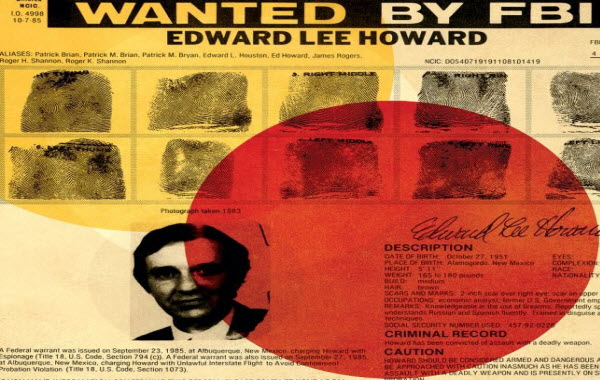
Information continued to flow from Vitaly Yurchenko for weeks at the safe house. Each night, he would leap up to record any new information he recalled, to share with the Americans in the morning. During the information sessions, he hinted at the reasons behind his drastic decision to defect, claiming that he no longer believed in communism and thought the Soviet intelligence was corrupt. However, his primary motives seemed more personal. He mentioned that there was nothing left for him in the Soviet Union, with an unloved wife, a troubled 16-year-old son, and a recently deceased mother due to stomach cancer. He claimed he was also suffering from the same illness that had killed his mother, so he had little time left to live, prompting him to defect immediately and without hesitation. The agents observed that Yurchenko’s sudden departure, without a plan, was evident in his demeanor and clothing. In exchange for his cooperation, Yurchenko requested two main things: money and the assurance of anonymity and secrecy regarding his defection. He explained that as long as the Soviet legal system could not prove he was a traitor, the KGB would not retaliate against his wife and son. The Americans agreed and also promised him a steady income and free healthcare for life if he stayed. It seemed like a reasonable deal.
After a month of divulging secrets to the American investigators, Yurchenko began feeling bored and no longer woke up in the middle of the night eager to jot down notes. It became difficult to satisfy him, and CIA agents started to think he might be missing female companionship. However, Yurchenko showed no interest in meeting women but seemed particularly focused on one woman, his former lover from the late 1970s when he was stationed in Washington. She was a Soviet pediatrician named Valentina Yereskovsky, now living in Montreal. Yurchenko expressed a desire to go to Canada to bring her back to America, as his dream was to live in a relatively remote area in the United States with a Russian-speaking woman who could take care of him.
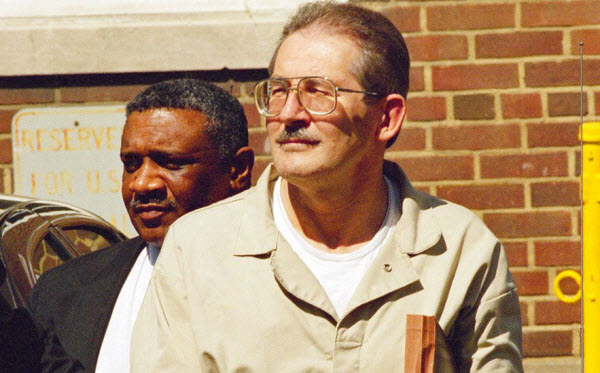
The Americans did their best to please Yurchenko and attempted to reunite him with his former lover, arranging for him to travel to Montreal with coordination from Canadian intelligence. They brought him to her doorstep, and the American intelligence was prepared to offer her asylum and arrange for her immediate relocation to the United States, treating her as a defector as well. However, instead of embracing Yurchenko, she met him coldly, labeled him a traitor, refused to leave her husband and children for him, and shut the door in his face. Matters worsened when Yurchenko noticed a news report about the CIA capturing a prominent Soviet defector, leading to suspicion that someone leaked Yurchenko’s case (even if his name was not explicitly mentioned) to the press. The agents suspected the leak might have come directly from then-CIA Director William Casey, causing his furious reaction. In a desperate attempt to salvage the cooperation, the Americans devised a plan for a two-week road trip to entertain Yurchenko, flying from Washington to Phoenix with a six-person team, including Thompson from the CIA, Rashford, another FBI colleague, two security guards, and Yurchenko. The idea was to take him out of the usual safe house routine and, if necessary, find him a woman.
During the trip, the men developed a genuine friendship, rented two cars, and traveled north in civilian clothes, showing Yurchenko the sights, teaching him golf, and visiting a horse ranch. They even took him to a restaurant where they encountered an elegant young woman named Martha, who seemed to attract Yurchenko’s attention. After brief conversations, Yurchenko was smitten by her beauty and agreed to meet her again. While the Americans were pleased with Yurchenko’s improved mood, their trip back to Washington was abruptly interrupted. The car carrying Yurchenko, Rashford, and the security team broke down in the desert, leading them to hitchhike. On reaching a nearby motel, they stayed overnight, and in the morning, Yurchenko mysteriously disappeared from his room, along with a suitcase full of classified information. They soon learned from the motel’s security camera footage that Yurchenko had left the room with a man matching the description of a Soviet diplomat, suggesting that he had defected back to the Soviet Union. The Americans’ initial optimism quickly turned to despair as their plans fell apart.
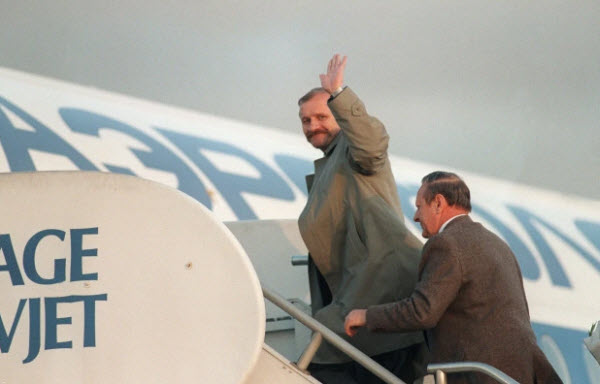
Yurchenko’s escape was meticulously planned, and he had left behind clues that suggested it was his intention from the start. He had found ways to manipulate the situation to his advantage, successfully deceiving the Americans who had trusted him. After Yurchenko’s departure, the CIA and FBI were left with more questions than answers, facing the repercussions of their failed attempt to recruit a Soviet defector who outwitted them. The whole episode served as a stark reminder of the intricacies and risks involved in espionage and intelligence operations during the Cold War era, where the line between loyalty and betrayal was often blurred.
